Полтавская область.pptx
- Количество слайдов: 16
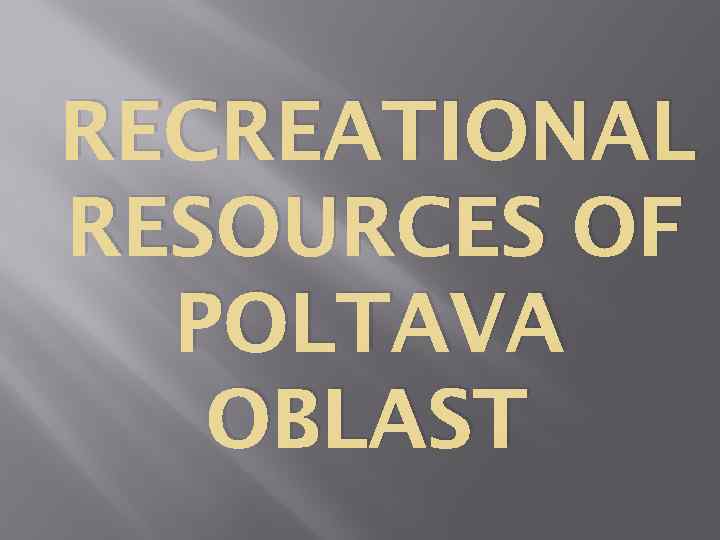
RECREATIONAL RESOURCES OF POLTAVA OBLAST
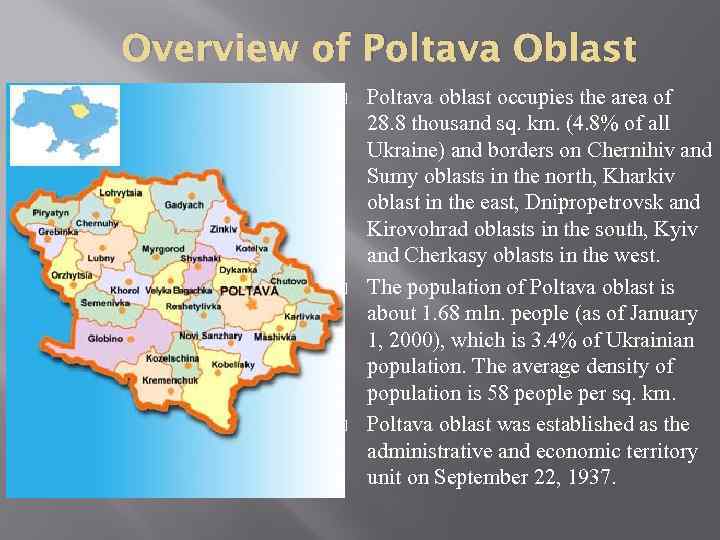
Overview of Poltava Oblast Poltava oblast occupies the area of 28. 8 thousand sq. km. (4. 8% of all Ukraine) and borders on Chernihiv and Sumy oblasts in the north, Kharkiv oblast in the east, Dnipropetrovsk and Kirovohrad oblasts in the south, Kyiv and Cherkasy oblasts in the west. The population of Poltava oblast is about 1. 68 mln. people (as of January 1, 2000), which is 3. 4% of Ukrainian population. The average density of population is 58 people per sq. km. Poltava oblast was established as the administrative and economic territory unit on September 22, 1937.
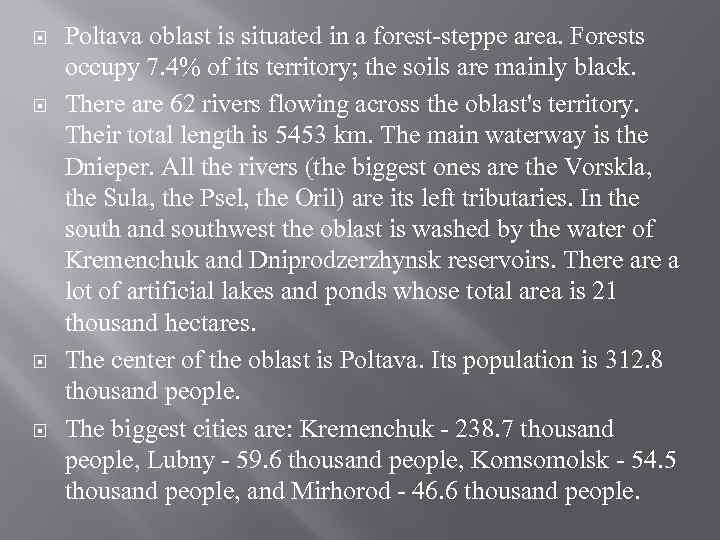
Poltava oblast is situated in a forest-steppe area. Forests occupy 7. 4% of its territory; the soils are mainly black. There are 62 rivers flowing across the oblast's territory. Their total length is 5453 km. The main waterway is the Dnieper. All the rivers (the biggest ones are the Vorskla, the Sula, the Psel, the Oril) are its left tributaries. In the south and southwest the oblast is washed by the water of Kremenchuk and Dniprodzerzhynsk reservoirs. There a lot of artificial lakes and ponds whose total area is 21 thousand hectares. The center of the oblast is Poltava. Its population is 312. 8 thousand people. The biggest cities are: Kremenchuk - 238. 7 thousand people, Lubny - 59. 6 thousand people, Komsomolsk - 54. 5 thousand people, and Mirhorod - 46. 6 thousand people.
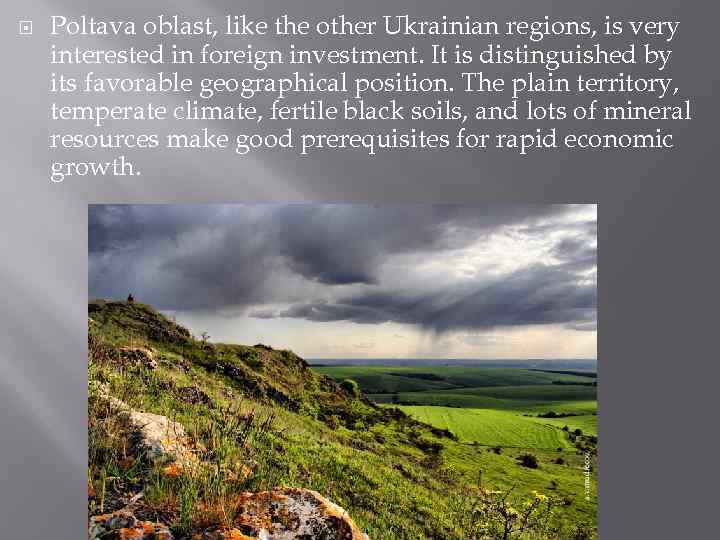
Poltava oblast, like the other Ukrainian regions, is very interested in foreign investment. It is distinguished by its favorable geographical position. The plain territory, temperate climate, fertile black soils, and lots of mineral resources make good prerequisites for rapid economic growth.
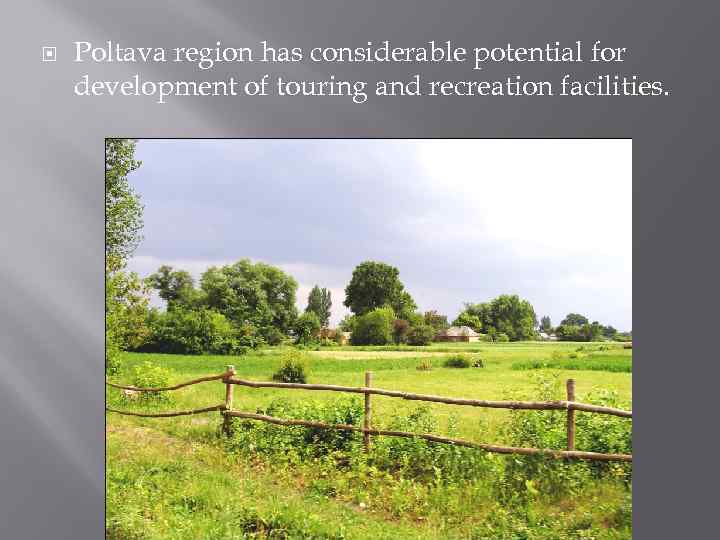
Poltava region has considerable potential for development of touring and recreation facilities.
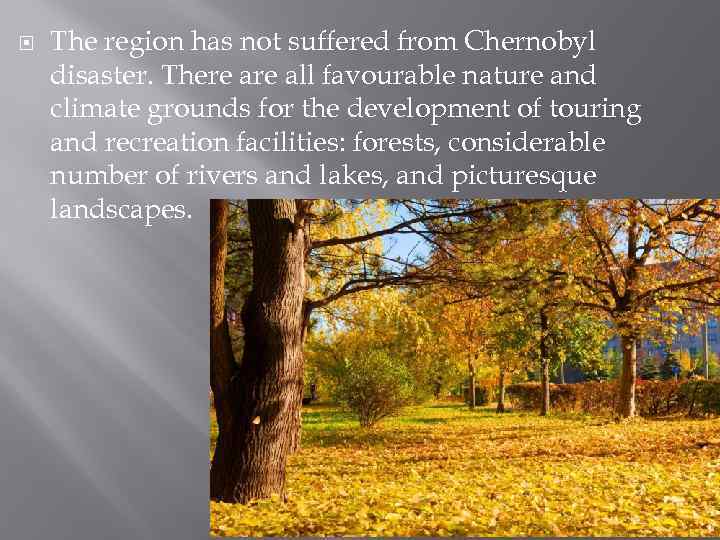
The region has not suffered from Chernobyl disaster. There all favourable nature and climate grounds for the development of touring and recreation facilities: forests, considerable number of rivers and lakes, and picturesque landscapes.
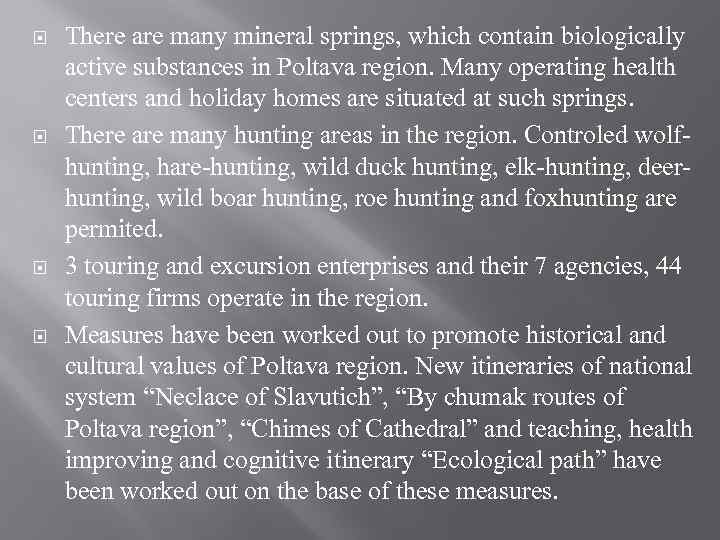
There are many mineral springs, which contain biologically active substances in Poltava region. Many operating health centers and holiday homes are situated at such springs. There are many hunting areas in the region. Controled wolfhunting, hare-hunting, wild duck hunting, elk-hunting, deerhunting, wild boar hunting, roe hunting and foxhunting are permited. 3 touring and excursion enterprises and their 7 agencies, 44 touring firms operate in the region. Measures have been worked out to promote historical and cultural values of Poltava region. New itineraries of national system “Neclace of Slavutich”, “By chumak routes of Poltava region”, “Chimes of Cathedral” and teaching, health improving and cognitive itinerary “Ecological path” have been worked out on the base of these measures.
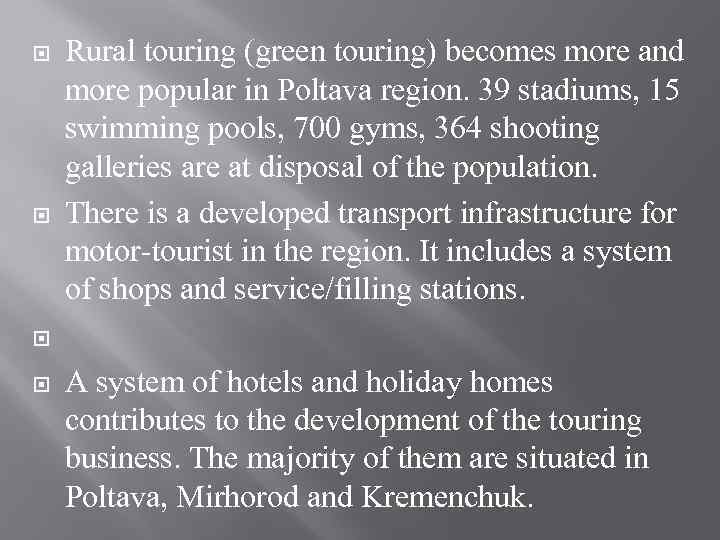
Rural touring (green touring) becomes more and more popular in Poltava region. 39 stadiums, 15 swimming pools, 700 gyms, 364 shooting galleries are at disposal of the population. There is a developed transport infrastructure for motor-tourist in the region. It includes a system of shops and service/filling stations. A system of hotels and holiday homes contributes to the development of the touring business. The majority of them are situated in Poltava, Mirhorod and Kremenchuk.
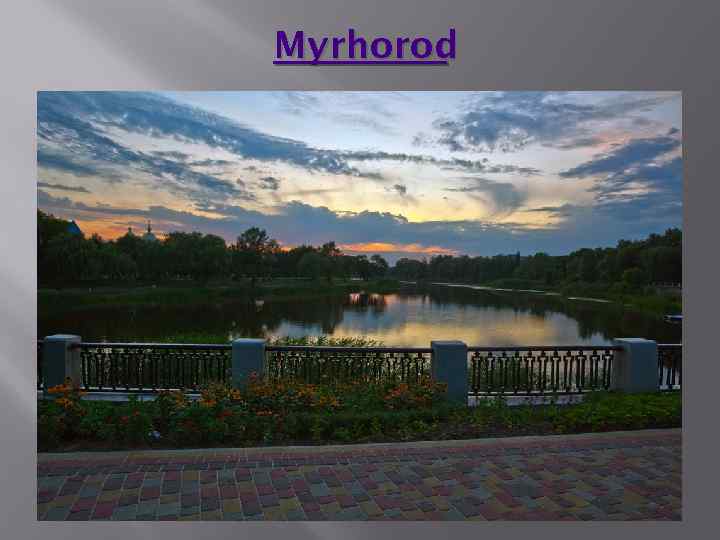
Myrhorod
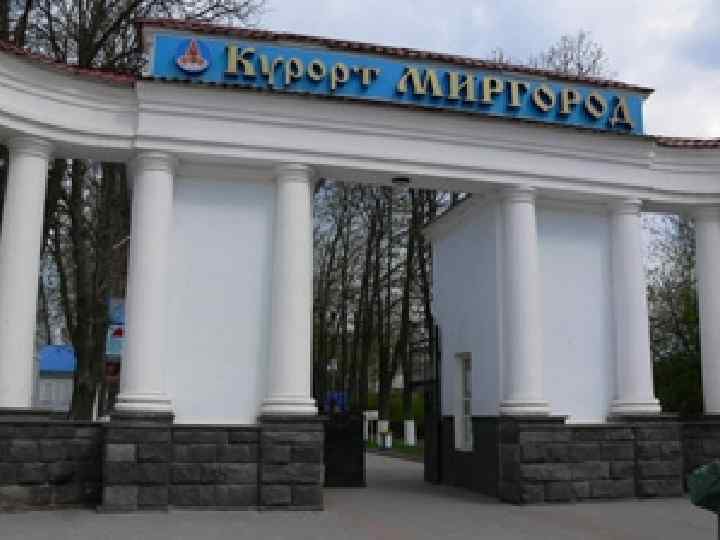
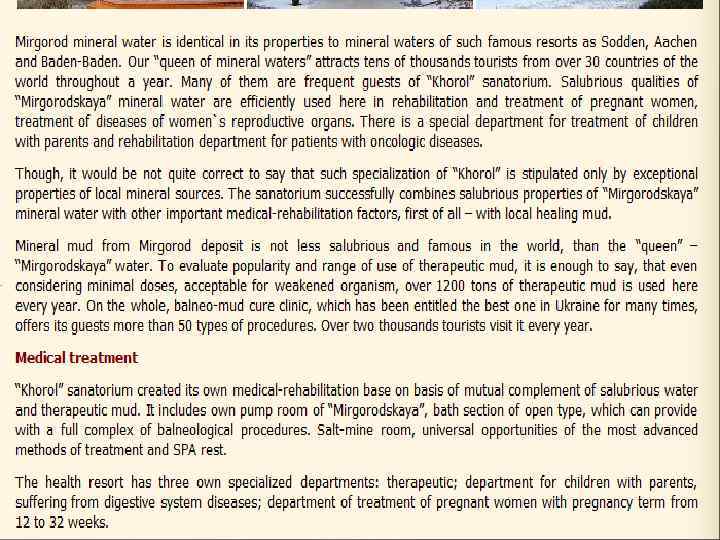
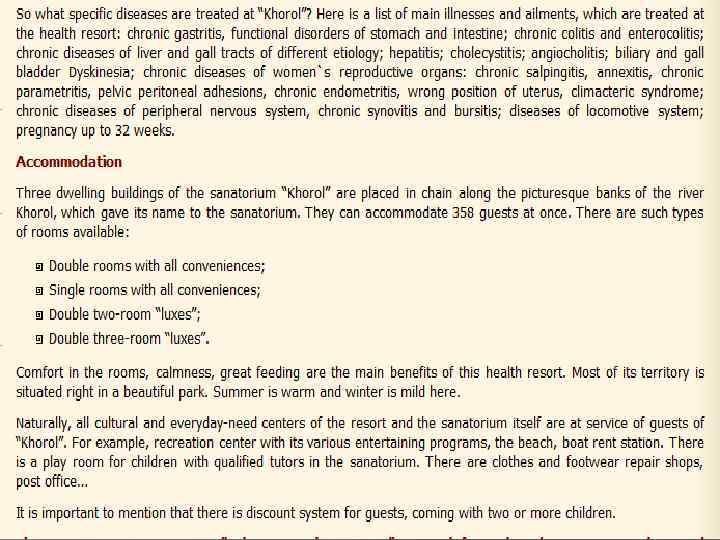
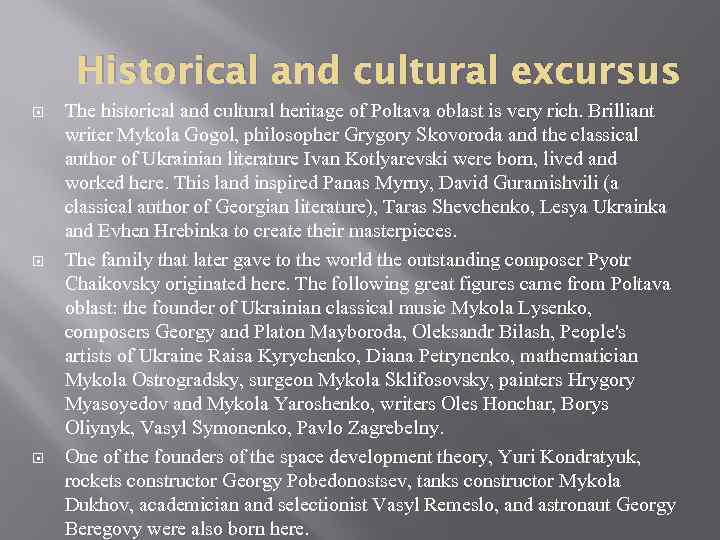
Historical and cultural excursus The historical and cultural heritage of Poltava oblast is very rich. Brilliant writer Mykola Gogol, philosopher Grygory Skovoroda and the classical author of Ukrainian literature Ivan Kotlyarevski were born, lived and worked here. This land inspired Panas Myrny, David Guramishvili (a classical author of Georgian literature), Taras Shevchenko, Lesya Ukrainka and Evhen Hrebinka to create their masterpieces. The family that later gave to the world the outstanding composer Pyotr Chaikovsky originated here. The following great figures came from Poltava oblast: the founder of Ukrainian classical music Mykola Lysenko, composers Georgy and Platon Mayboroda, Oleksandr Bilash, People's artists of Ukraine Raisa Kyrychenko, Diana Petrynenko, mathematician Mykola Ostrogradsky, surgeon Mykola Sklifosovsky, painters Hrygory Myasoyedov and Mykola Yaroshenko, writers Oles Honchar, Borys Oliynyk, Vasyl Symonenko, Pavlo Zagrebelny. One of the founders of the space development theory, Yuri Kondratyuk, rockets constructor Georgy Pobedonostsev, tanks constructor Mykola Dukhov, academician and selectionist Vasyl Remeslo, and astronaut Georgy Beregovy were also born here.
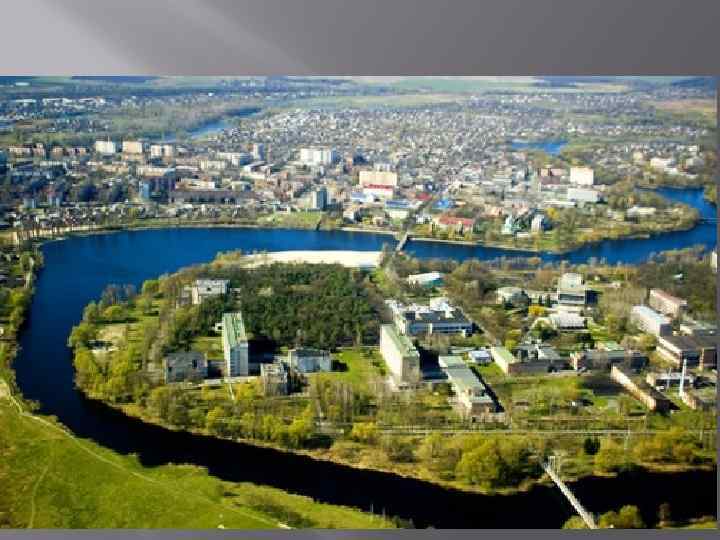
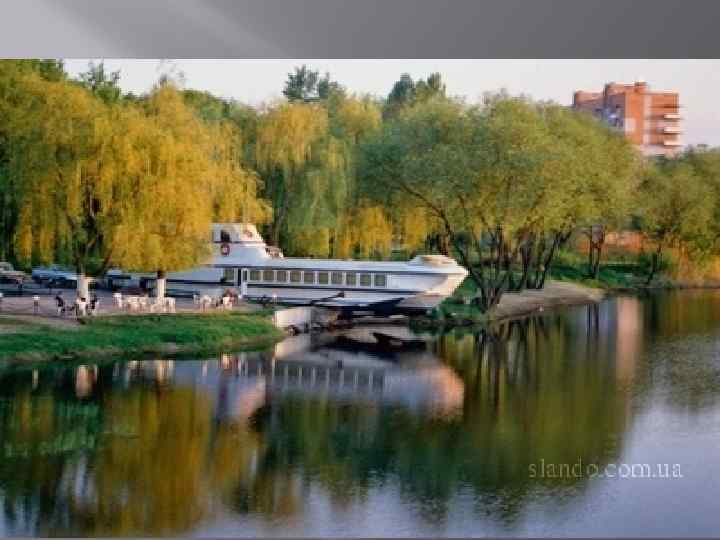
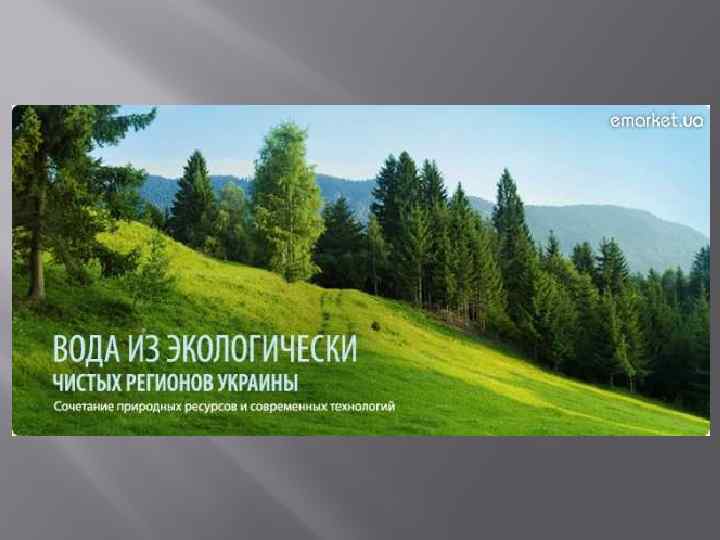
Полтавская область.pptx